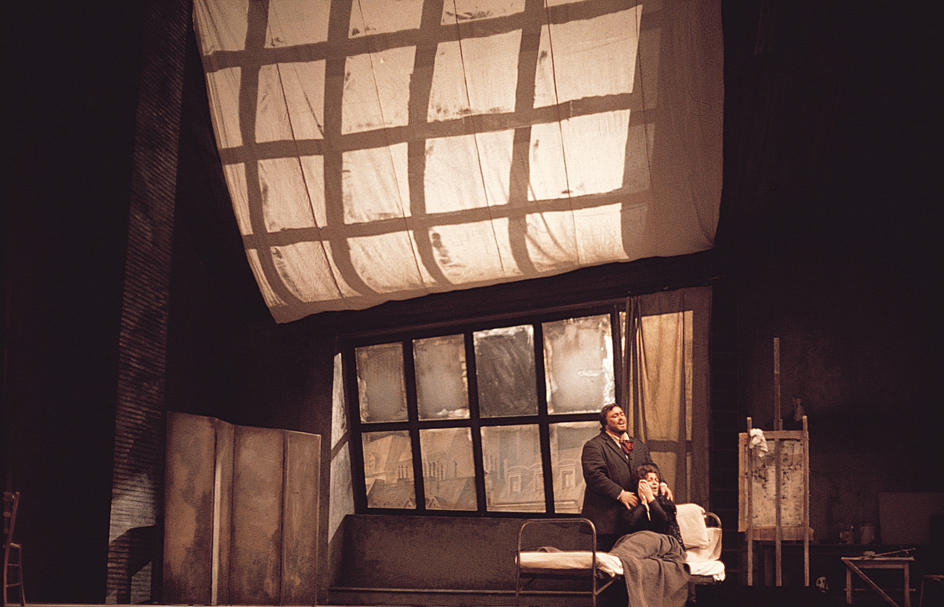Bohème, La, is the name of a tragic opera in four acts by the Italian composer Giacomo Puccini . The title is French and translates roughly as “Bohemian Life.” La Bohéme is set to a libretto (text) in Italian by Giuseppe Giacosa and Luigi Illica. The libretto is based on the French novel Scenes from Bohemian Life by Henri Murger. The opera was first performed at the Teatro Regio in Turin, Italy, on Feb. 1, 1896. The premiere was a failure with the critics, but by the end of the 1800’s La Bohéme had become one of the most popular operas in the entire repertoire (prepared program).

Four poor young men are living a bohemian (carefree and unconventional) life together in an attic in Paris, about 1830. They are Rodolfo, a poet; Marcello, a painter; Schaunard, a musician; and Colline, a philosopher. Mimi, a frail young seamstress in poor health, is their neighbor. She and Rodolfo meet and fall in love.
La Bohème charts the relationship between Rodolfo and Mimi, which proves unsatisfactory, leading them to part. The opera also concerns itself with the lives of Rodolfo’s friends, and especially with the stormy relationship between Marcello and a flirtatious young woman called Musetta. At the end of the opera, Musetta brings word to Rodolfo and the others that she has brought the dying Mimi to their garret. The girl wishes to spend her last hours with Rodolfo. At Mimi’s death, he collapses in grief.
Loading the player...La Bohème
Although La Bohème ends tragically, it is full of humor and romance. Besides the scenes in a garret, Puccini allows us to glimpse cafe life in the Latin Quarter of Paris. The opera also has a number of Puccini’s best-loved melodies. Among them are Rodolfo’s aria “Che gelida manina” (“Your tiny hand is frozen”) and the love duet between Rodolfo and Mimi, “O soave fanciulla” (“O sweet girl”), which ends Act I. Other familiar numbers are the heroine’s aria “Mi chiamano Mimi” (“They call me Mimi”) in Act I and “Musetta’s Waltz” in Act II.
